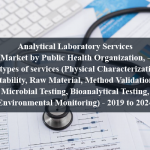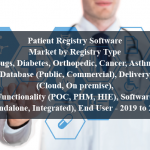OVERVIEW
The Rapid Microbiology Testing Market is projected to grow significantly from USD 5.7 billion in 2024 to an estimated USD 10.2 billion by 2029, reflecting a CAGR of 12.3% during the forecast period. Rapid microbiology testing involves the use of advanced technologies to quickly detect, identify, and quantify microorganisms in various samples. This market encompasses various testing technologies such as polymerase chain reaction (PCR), immunoassays, flow cytometry, and mass spectrometry. The increasing prevalence of infectious diseases, advancements in microbiology testing technologies, and the growing demand for faster and accurate diagnostic results are driving the market’s growth.
The market’s expansion is also supported by rising healthcare expenditure, increased awareness of infectious disease management, and the integration of advanced technologies such as automation and artificial intelligence (AI) in microbiology testing. However, challenges such as high costs of rapid microbiology tests, stringent regulatory requirements, and the complexity of integrating new technologies into existing workflows need to be addressed to sustain market growth.
Geographically, North America and Europe dominate the rapid microbiology testing market due to their advanced healthcare infrastructure, significant investments in healthcare, and high adoption rates of innovative microbiology testing technologies. The Asia Pacific region is also expected to witness substantial growth, driven by increasing healthcare expenditure, growing awareness of infectious disease management, and the expanding healthcare sector.
Market Dynamics
Drivers:
The primary driver of the Rapid Microbiology Testing Market is the increasing prevalence of infectious diseases. Conditions such as COVID-19, influenza, tuberculosis, and other bacterial and viral infections are becoming more common worldwide. The rise in these diseases necessitates rapid and accurate diagnostic solutions to control and manage outbreaks effectively. Rapid microbiology testing provides several advantages, including reduced time-to-result, enhanced sensitivity and specificity, and the ability to quickly identify pathogens. These benefits make rapid microbiology testing an attractive option for both healthcare providers and patients. Additionally, advancements in testing technologies, such as the development of high-throughput systems and point-of-care tests, are enhancing the efficiency and accessibility of microbiology testing, contributing to market growth.
Another significant driver is the growing demand for faster and accurate diagnostic results. The timely detection and identification of pathogens are crucial for effective patient management and treatment. Rapid microbiology testing enables healthcare providers to make informed decisions quickly, improving patient outcomes and reducing the spread of infections. The integration of advanced technologies, such as automation and AI, is further enhancing the capabilities of microbiology testing systems, enabling real-time data analysis, predictive diagnostics, and personalized treatment plans. The rising preference for rapid and accurate diagnostics and the continuous advancements in testing technologies are driving the growth of the rapid microbiology testing market.
Key Opportunities
The Rapid Microbiology Testing Market presents numerous opportunities for growth and innovation, particularly in the development and integration of advanced technologies. One prominent opportunity lies in the increasing use of automation in microbiology testing. Automated systems can enhance the efficiency, accuracy, and consistency of microbiology tests, reducing the risk of human error and improving overall process control. The integration of automation with traditional microbiology methods is expected to drive market growth by providing more reliable and efficient diagnostic solutions. Additionally, automated systems can facilitate the development of high-throughput testing, enabling the simultaneous analysis of multiple samples and increasing laboratory productivity.
The growing focus on expanding the applications of rapid microbiology testing presents another lucrative opportunity for the market. While rapid microbiology testing is commonly used for infectious disease diagnosis, there is increasing interest in exploring its potential for other applications, such as in pharmaceutical quality control, food safety, and environmental monitoring. Research and clinical trials are being conducted to evaluate the safety and efficacy of rapid microbiology tests for these indications. The expanding applications of rapid microbiology testing are expected to drive market growth by providing new diagnostic solutions for a broader range of industries and needs. Vendors that invest in research and development to explore new applications and improve existing testing technologies are well-positioned to capitalize on this market trend.
Restraints:
One of the significant restraints in the rapid microbiology testing market is the high cost of diagnostic tests. The development and deployment of advanced testing technologies, such as PCR and mass spectrometry, require substantial investments in research, equipment, and training. The high upfront costs and ongoing maintenance expenses can be a barrier to adoption, particularly for small and medium-sized healthcare facilities and laboratories with limited budgets. Additionally, the cost of consumables and reagents used in rapid microbiology tests further increases the total cost of ownership. To overcome this restraint, vendors need to offer cost-effective solutions and flexible pricing models that cater to the diverse needs of healthcare providers and laboratories.
Stringent regulatory requirements and the complexity of integrating new technologies into existing workflows pose another challenge for the rapid microbiology testing market. Diagnostic tests and procedures must undergo rigorous validation and approval processes to ensure their safety, efficacy, and reliability. Compliance with regulatory standards, such as the FDA’s approval process and the European Union’s In Vitro Diagnostic Regulation (IVDR), is essential for market entry and commercialization. The complexity of integrating new technologies, which involves updating laboratory protocols and training personnel, further complicates the regulatory landscape. Ensuring compliance with regulatory requirements and maintaining high-quality standards is critical for the successful deployment and operation of rapid microbiology testing technologies. Vendors must navigate these regulatory challenges and invest in quality assurance to meet the stringent requirements of the healthcare industry.
Regional Information:
- North America
North America remains a significant market for rapid microbiology testing solutions, characterized by advanced healthcare infrastructure, high adoption rates of innovative testing technologies, and substantial investments in healthcare research and development. The region’s strong presence of leading biotechnology and pharmaceutical companies and the high focus on enhancing diagnostic capabilities drive market growth. The increasing prevalence of infectious diseases, such as COVID-19 and influenza, is propelling the adoption of rapid microbiology testing solutions in the region. Furthermore, stringent regulatory requirements and the need for robust diagnostic options encourage healthcare providers and laboratories to invest in advanced microbiology testing technologies. However, the high cost of diagnostic tests and regulatory complexities remain challenges that need to be addressed to fully capitalize on the market potential.
- Europe
Europe leads in the adoption of rapid microbiology testing solutions, driven by stringent regulatory requirements, significant investments in healthcare infrastructure, and a strong commitment to improving patient outcomes. The region’s focus on innovation and technological advancement fuels the demand for advanced diagnostic solutions. Countries like the UK, Germany, and France are at the forefront of implementing rapid microbiology testing technologies to enhance diagnostic and treatment capabilities and ensure compliance with regulatory standards. The European Union’s regulations, such as the In Vitro Diagnostic Regulation (IVDR), mandate stringent data protection and quality assurance measures, further driving market growth. However, economic uncertainties and the complexity of regulatory compliance necessitate strategic planning and risk management to navigate the market landscape effectively.
- Asia Pacific
The Asia Pacific region is expected to witness the highest growth rate in the rapid microbiology testing market due to rapid digital transformation, increasing healthcare expenditure, and the expanding healthcare sector. Countries like China, India, and Japan are investing heavily in rapid microbiology testing solutions to support business growth and enhance diagnostic capabilities. The region’s expanding middle class and rising disposable incomes are also contributing to the increasing adoption of rapid microbiology testing solutions in various sectors such as hospitals, diagnostic laboratories, and research institutes. Governments in the region are implementing initiatives to promote digitalization and support the growth of the healthcare economy, further driving market growth. However, challenges related to regulatory compliance, fluctuating economic conditions, and the need for skilled healthcare professionals necessitate localized strategies and market insights for successful market penetration.
Recent Developments:
In December 2023, Danaher Corporation (US) acquired Abcam (UK), a company that offers the scientific community validated antibodies, reagents, biomarkers, and assays to address targets in biological pathways that are critical for advancing drug discovery, life sciences research, and diagnostics.
In May 2023, bioMérieux SA (France) received the US Food and Drug Administration (FDA) Clinical Laboratory Improvement Amendments (CLIA) waiver for the fast and accurate multiplex PCR-based BIOFIRE SPOTFIRE Respiratory (R) Panel Mini.
Key market Players:
Frequently Asked Questions
1) What is the projected market value of the Rapid Microbiology Testing Market?
– The Rapid Microbiology Testing Market is expected to reach an estimated value of USD 10.2 billion in revenue by 2029.
2) What is the estimated CAGR of the Rapid Microbiology Testing Market over the 2024 to 2029 forecast period?
– The CAGR is estimated to be 12.3% for the Rapid Microbiology Testing Market over the 2024 to 2029.
3) Who are the key players in the Rapid Microbiology Testing Market?
– The primary drivers for the Rapid Microbiology Testing Market include the increasing prevalence of infectious diseases, the growing demand for faster and accurate diagnostic results, and advancements in microbiology testing technologies. These factors are contributing to the rising demand for rapid microbiology testing solutions. The integration of automation and artificial intelligence (AI) in testing systems is also driving market growth.
5) What are the restraints and challenges in the Rapid Microbiology Testing Market?
– The high cost of diagnostic tests and stringent regulatory requirements are significant challenges in the market. These factors can limit the adoption of advanced microbiology testing technologies. Additionally, the complexity of integrating new technologies into existing workflows and ensuring compliance with regulatory standards poses challenges that need to be addressed to ensure effective and secure diagnostic operations.
6) What are the key applications and offerings of the Rapid Microbiology Testing Market?
– Rapid microbiology testing is essential for the quick and accurate detection, identification, and quantification of microorganisms in various samples. It supports advanced diagnostic techniques, enabling precise pathogen identification and timely intervention. These solutions improve patient outcomes by enhancing diagnostic accuracy, facilitating early intervention, and supporting personalized treatment plans. Additionally, rapid microbiology testing is crucial in settings such as hospitals, diagnostic laboratories, pharmaceutical companies, and food safety and environmental monitoring, enhancing the efficiency and effectiveness of diagnostic and monitoring processes.
7) Which region is expected to drive the market for the forecast period?
– Asia pacific is expected to have the highest market growth from 2024 to 2029
Why Choose Us?
Insights into Market Trends: Global Market Studies reports provide valuable insights into market trends, including market size, segmentation, growth drivers, and market dynamics. This information helps clients make strategic decisions, such as product development, market positioning, and marketing strategies.
Competitor Analysis: Our reports provide detailed information about competitors, including their market share, product offerings, pricing, and competitive strategies. This data can be used to inform competitive strategies and to identify opportunities for growth and expansion.
Industry Forecasts: Our reports provide industry forecasts, which will inform your business strategies, such as investment decisions, production planning, and workforce planning. These forecasts can help you to prepare for future trends and to take advantage of growth opportunities.
Access to Industry Experts: Our solutions include contributions from industry experts, including analysts, consultants, and subject matter experts. This access to expert insights can be valuable for you to understand the market.
Time and Cost Savings: Our team at Global Market Studies can save you time and reduce the cost of conducting market research by providing comprehensive and up-to-date information in a single report, avoiding the need for additional market research efforts.












